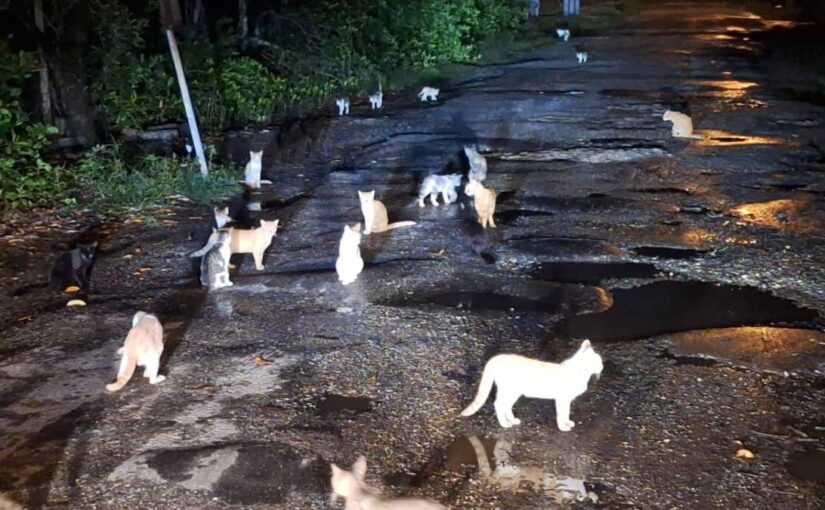

Cats are seen prowling a street in Caroni at night. -
The Trinidad and Tobago Incoming Tour Operators Association is calling for swift action to rid the Caroni Swamp of a cat infestation that has been growing for over a decade.
The association, in a media release on October 28, said feral cats are feeding on the wildlife, making them an environmental threat to the swamp.
“Hard data indicates that between 200-300 cats are rapidly multiplying and destroying native wildlife at an alarming rate. Given these numbers, capturing, removing and euthanising the cats may be necessary, as shelters are already overflowing and unable to accommodate such a large influx,” the release said.
It said while animal-rights activists are against capturing and euthanising the wild cats, leaving them to thrive in the swamp is not an option.
“(They) seem untroubled by the complete eradication of the native wildlife,” the release said. “Are the lives of the swamp's natural species not equally important?”
>
The release added that some people have tried poisoning the cats, but that caused significant damage to the natural food chain in the swamp.
The association said if the situation continues to be overlooked, free-roaming cats will run rampant in Caroni and may eventually reach nesting sites of the scarlet ibis.
TTSPCA: 'We can't handle all those cats'
The operations manager of the TT Society for the Prevention of Cruelty to Animals (TTSPCA), Sara Maynard-Agostini, told Newsday Caroni has been one of many dumping sites for unwanted cats for years.
She also identified areas including Chaguaramas and Waterloo as other dumping sites.
She said ridding the area of the cats would take a massive capturing exercise that the TTSPCA, with its current resources and manpower, simply cannot handle.
“People always dump animals by fishing centres or anywhere where they think there's a possibility of them getting food or where they know that people will feed them,” she said. “People also set up feeding stations for them, but it is a difficult thing, because what are you going to do with all these cats?
“We've been asked multiple times by various groups that go in and deal with it and we just don't have the resources.”
She said while capturing and relocating the cats might be an option, it may cause other problems in that the number of cats could lead to hoarding and the spread of disease.
>
She said the TTSPCA would support the humane euthanasia of the cats with the oversight of the relevant ministry and vets.
“I'm not going to say the TTSPCA is anti-euthanasia. That is not the case. We believe in animals not suffering, and if that means euthanasia, well then, that's fine.
"But that would have to be done under the oversight of the vets, the Ministry of Agriculture and Ministry of Tourism, or whoever manages that site there.”
Managing director of the Environmental Management Authority (EMA) Hayden Romano said he was not aware of the extent of the situation, but the authority would look into it to see where it could help
“We have heard about it, but we weren’t aware of the extent of the problem. In visiting Caroni, we’ve seen the cats around, but in terms of the extent of the problem we surely had no idea,” Romano said.
He said the EMA plans to meet with the Forestry Division, the division tasked with oversight of the swamp, to discuss a plan of action.
“We will also have to speak to the TTSPCA and others to see what is the best if the cats are a threat to biodiversity in Caroni.”
A report by the Florida Fish and Wildlife Conservation Commission said one feral cat can kill more than 100 or more birds and mammals a year. Scientists in Wisconsin estimate cats kill at least 7.8 million birds per year in that US state alone.
Cats can also compete with native wildlife and can spread diseases such as toxoplasmosis – a parasitic infection that has been known to kill mammals such as manatees.
>
Animal behaviour experts have also noted that feral cats will hunt and kill even when well-fed, making them a natural threat to wildlife.
Related News

Trinidad and Tobago calls for climate change action, support for Haiti at G-24

UTT honorary doctorate awardee tells graduates: Use your degrees to make positive change

Locals buying less rum: Angostura’s profits drop


